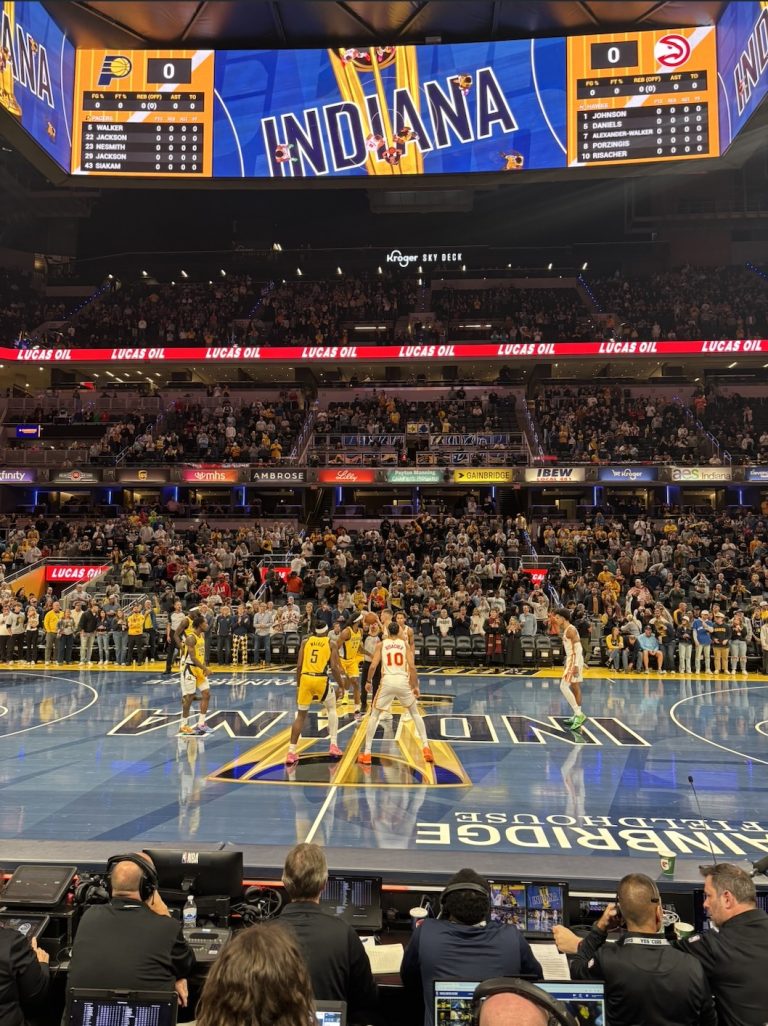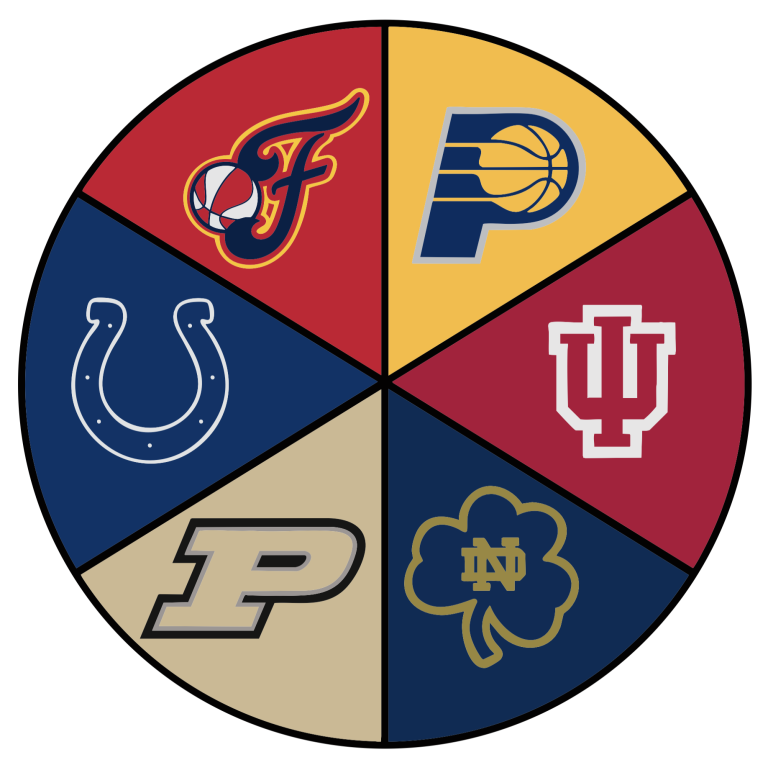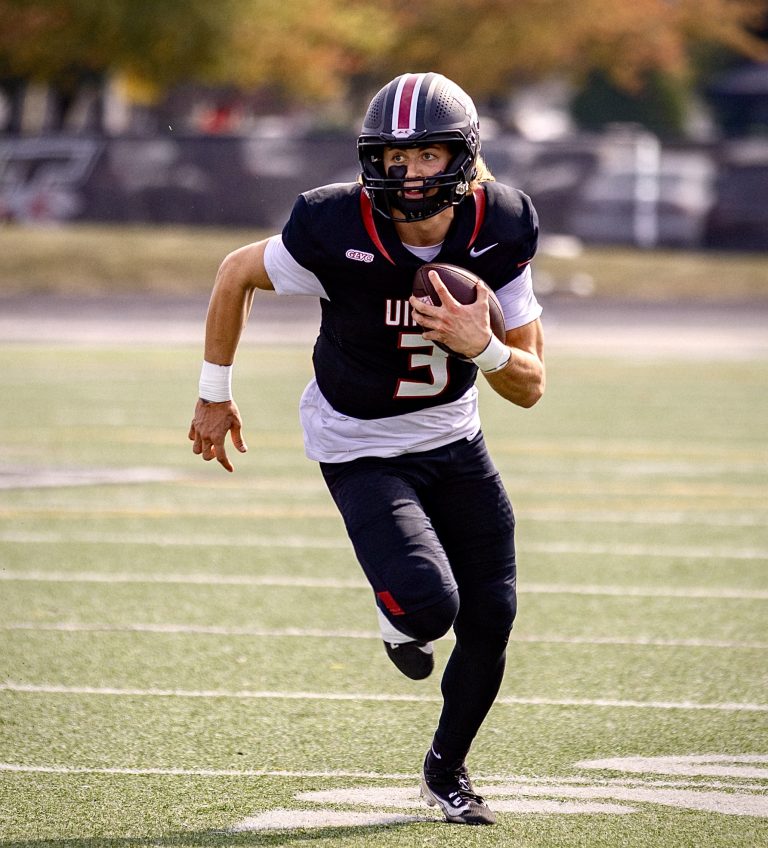While bench pressing during a routine workout on Sept. 9, University of Indianapolis redshirt junior track and field thrower Keeton Adams felt that something was off internally. The next thing he knew, two of his teammates, his coach and the strength and conditioning coaches were at his side; and the athletic trainers were called in. What was not clear from the initial evaluation the day of the injury became clear, after an MRI a few days later when Adams found out he had suffered a torn pectoral muscle. This would keep Adams out four to five months, possibly missing his season.
For student-athletes, injuries are bound to happen, no matter how careful they are. In sports medicine for UIndy Athletics, the main priority in caring for athlete injuries is safety. The body cannot be forced to heal quicker than it needs to, and sometimes all the UIndy staff can do is be there for athletes during the recovery process, Adams said.
“They [UIndy] don’t jump to conclusions with it and they try to calm the athlete down to make them realize like, ‘Hey this isn’t the end,'” Adams said. “They’re very supportive. For me when this happened, I was very afraid of having to restart and everything else. But after talking to the trainers, just saying, ‘Hey this happened to athletes beforehand… we’re going to put you on this protocol because this has helped these athletes get back and they play better than ever.’ And honestly, I would just say that the support system they have overall [is helpful].”
Assistant Athletic Director for Sports Medicine Brian Gerlach said there are athletic trainers around at every practice and game. He said that they have nine full-time athletic trainers that work with the teams, and some are specifically dedicated to a single sports team. Team physicians and doctors are readily available to be contacted and UIndy has physician support from Community Health Network, including an orthopedic surgeon who is on campus once a week, according to Gerlach. Gerlach said there are three athletic training rooms that athletes can be taken to when an injury occurs, where they are initially evaluated.
“We have a lot of resources,” Gerlach said. “If [the injury] is something that one of our athletic trainers haven’t seen before we always have them as a resource.”
According to Gerlach, a multi-disciplinary approach is taken to recurring athlete injuries. UIndy’s medical team looks at movement patterns that may predispose the athlete to injury, Gerlach said. An example of a recurring injury is a stress fracture and one thing that they take into account is nutrition.
UIndy has a dietitian who visits once a week and a sports psychologist who comes in two days a week for private appointments with athletes. Gerlach said the process of healing from an injury is faster if the person is in excellent shape before the injury occurs, and he believes that having multi-disciplinary resources helps play a role in athletes’ recoveries.
A stress fracture, which is a tiny crack in a bone from repetitive stress, force or overuse, can affect a person at any time. Days can go by and no signs of the stress fracture occur. For senior track and field high jumper Chandler Martin, having the injury flare up is something that can put a damper on his mood. It stops him from being around his friends, being at practice, Martin said, but continuing sports is something that he really wants to do.
Martin said the process he goes through to help his stress fracture includes having a conversation with the athletic trainer and planning out what steps need to be taken to help suppress the injury. Martin said he does physical therapy at home with a regimen implemented by physicians and only goes somewhere else for it if he requires help.
Other healing processes may include going to a medical doctor for X-rays or other tests or just taking time off, Martin said, and the staff decides what needs to happen from there. Martin said that while he has used neither the dietician nor the psychologist, he appreciates that those resources are available, and that his teammates can use them on a prioritized need basis.
“I think it provides a peace of mind to know that you have those resources and you’re not going to be left out to dry,” Martin said. “And in case you do need them, they’re at the ready.”
Martin said he believes the speed of the injury diagnosis and creation of a plan is the most helpful thing UIndy does for him. He said that in situations where there is an injury on the field or court, the trainers are out there within 30 seconds and ready to help.
Gerlach said that a huge part of recovery and maintaining health is making sure one does not come back too quickly from an injury. He said that, from research he and his team know that athletes who come back too early from injuries are at a higher risk for reinjury, and other ones as well. When coming back from an injury the athletic trainers are right there next to players, helping whatever depression and anxiety the athletes go through in the phases of healing, Associate Athletic Trainer for football Zarah Calvin said.
Calvin’s relationship with the players is very respectful, she said. The only time she feels advice is not taken is when the newcomers have to adjust to a collegiate-level athletic training program, she said. Calvin said she and other trainers give precautionary advice on how to prevent injuries, such as paying attention to nutrition, drinking enough water in a day, stretching and sleeping. These measures help show how the players are going to be in the best shape come the next day, Calvin said. She said she has witnessed 18-year-olds who think they’re invincible, versus the 22-year-old who understands the importance of the advice. College athletics is hard on the body, Calvin said, and it’s a lot more intense than previous levels of athletics.
“Work hard, do what you’re told and it will get better. The hardest part of an injury is [that] if you don’t take the right steps to take care of it, it takes longer to come back from,” Calvin said. “So that becomes more and more frustrating. So as tough as it is at the time doing the right things that you need to do and that are asked of you is that best way to get back the fastest.”







